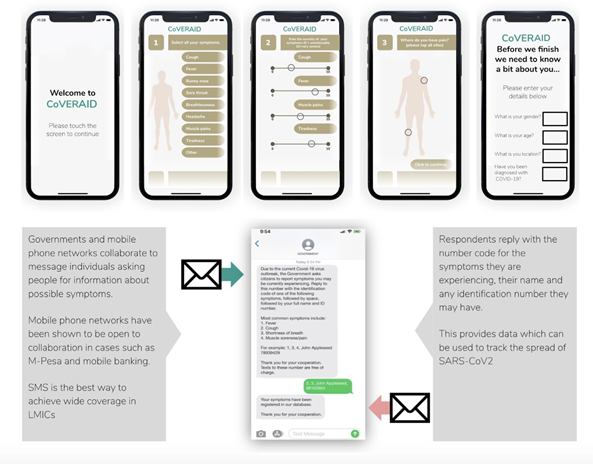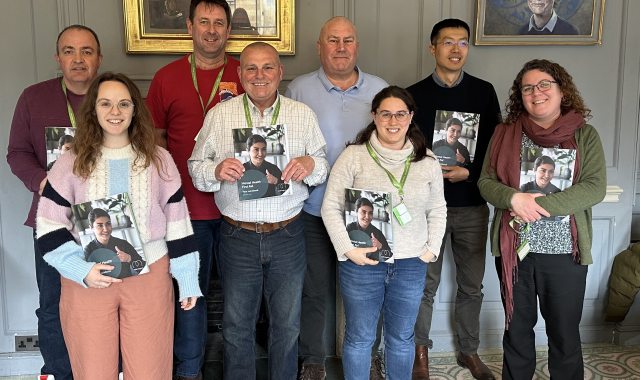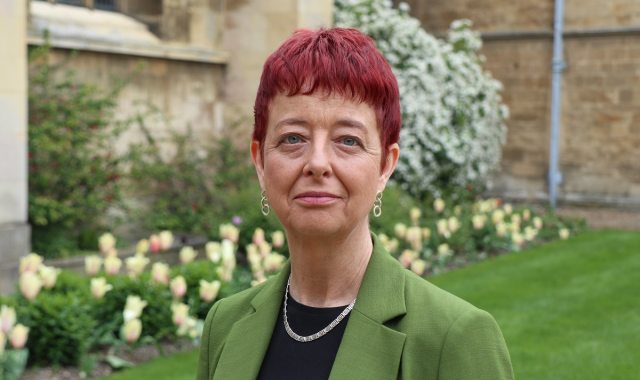Caian proposes an [App]t solution for contact tracing
- 24 July 2020
- 4 minutes
The world is facing a public health emergency and the response of individual nations at this critical point, emerging from strict lockdown, will determine the trajectory of the pandemic.
We have seen that many countries have started to track and trace cases of COVID-19 to limit the spread of disease among their populations. High income countries (HIC) have had some success in executing such strategies, but these time-consuming, supply-heavy solutions that also require good internet connectivity are still not proven to be suitable in low and middle income countries (LMIC), such as India or countries in Africa, during a pandemic.
During the five-day Johns Hopkins CBID COVID-19 Design Challenge earlier this year, Gonville & Caius College fourth year medical student Panayiotis Laouris (2016), together with a team of students from St John’s College Cambridge, the University of the West of Scotland and the University of Strathclyde, developed a system for tracking and tracing the spread of COVID-19 that does not rely on coronavirus testing kits if they are in short supply. Driven by their personal interest in global health, the team’s mission was to develop a solution that would shield LMICs from the spread of SARS-CoV2 and protect HICs from future waves, by intelligent tracking and tracing within regions using self-reported data.
 The team’s idea, which ranked within the top 20 entries and received special recognition from Johns Hopkins, focussed on tracking suspected but unconfirmed cases of COVID-19 through either a mobile app or an SMS text service depending on what is available in each country. “Imagine it like this,” the team explained, “you have a cough and a fever, so you list your symptoms on our app, which then applies an algorithm to generate the probability that you have COVID-19. Other people in your local area do the same whenever they begin to develop symptoms. By using aggregated data from a particular area, the probabilities average out and the government can tell how fast cases are stacking up near you. The government then has the power to decide whether to redistribute resources to your area, place your region on lock-down or relax measures as necessary. The same process would apply to someone in a low- or middle-income country except in this context we would be collecting data about symptoms through an SMS text service.”
The team’s idea, which ranked within the top 20 entries and received special recognition from Johns Hopkins, focussed on tracking suspected but unconfirmed cases of COVID-19 through either a mobile app or an SMS text service depending on what is available in each country. “Imagine it like this,” the team explained, “you have a cough and a fever, so you list your symptoms on our app, which then applies an algorithm to generate the probability that you have COVID-19. Other people in your local area do the same whenever they begin to develop symptoms. By using aggregated data from a particular area, the probabilities average out and the government can tell how fast cases are stacking up near you. The government then has the power to decide whether to redistribute resources to your area, place your region on lock-down or relax measures as necessary. The same process would apply to someone in a low- or middle-income country except in this context we would be collecting data about symptoms through an SMS text service.”
Their solution, Coveraid, is a “concept in development”, with further design work required before a full roll-out. They are persevering because they believe no existing solution addresses all the requirements of LMIC in emergencies. The team said, “Currently to diagnose COVID-19, RT-PCR is performed. Despite its prevalence, the sensitivity of this test is poor (60-70%), and supply issues mean that many symptomatic individuals are not tested. In countries like Italy and France, the cumulative number of unreported cases is projected to be sixfold that of the cumulative number of those reported by mid-May. This underlines the need for improved resource allocation and tracking of suspected but not confirmed cases.
“While some companies have addressed this issue, such as the COVID-19 Symptom Tracker in the UK, and the ‘COVID Near You’ service offered in the USA, the availability of these tools may be poor in LMICs where the average internet penetration can be as low as 39.3%. For this reason, there is a gap in the market for an SMS service to collect this data and translate it into actionable content for low/middle-income governments. Our app for high-income countries is simply a complementary service to flesh out the data we are able to collect. The advantage is that our solution will help countries to avoid full-lockdowns by enabling a more refined region-specific approach to COVID-19 policies. This is crucial in LMICs where economies might be more fragile and where modelling efforts predict demand for critical care beds will outstrip the supply.”
The team have also provided reassurance that Coveraid “would not collect identifiable information, only the location of the phone which sent the data” which helps alleviate concerns about privacy. “This would be a one-time snapshot of the location, unlike the invasive 24/7 location tracking being employed by other apps in the market, and importantly does not have to be super precise – highlighting location loosely to within a neighbourhood,” as the team explained.
Looking to the future, the students are planning to develop the Coveraid project further. “The next steps,” according to the team, “are to work with experts such as developers and advisors and secure funding in order to maximise the project’s full potential.” The team is also working on a website, which will provide updates on their progress. They hope that Coveraid will help governments improve the tracking and tracing of suspected cases, for better control of lockdowns and resource allocations, therefore facilitating the management of the short-term economy of each country and allowing people to come back gradually to their daily lifestyles.
You can read the team's full COVID-19 Design Challenge report here.


